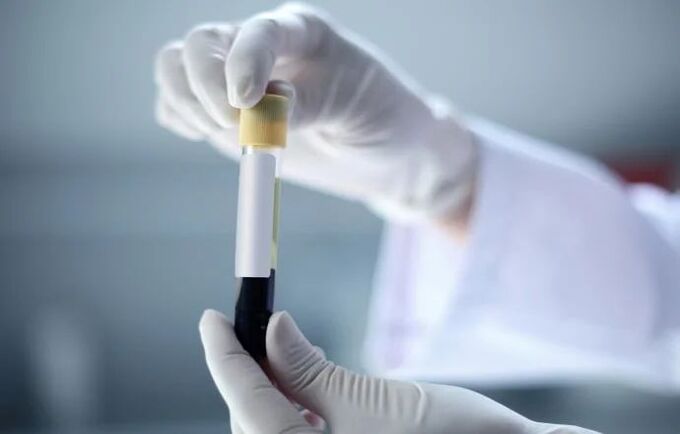Prostatitis is an inflammation of prostate tissue. Today, it is the most common urinary disease, mainly affecting sexually active men. According to various data, in the group of patients aged 20–40 years, the incidence of chronic prostatitis ranges from 20 to 35%. Furthermore, this diagnosis in association with benign prostatic hyperplasia is increasingly found in older age groups.
Failure to treat promptly and effectively leads to complications such as erectile dysfunction and infertility.
Types of prostatitis
The classification used today is based on the division of all types of prostatitis, depending on the presence of infectious pathogens, leukocytes in prostatic secretions, as well as clinical manifestations. ready. Accordingly, there are 4 types of prostatitis, each type has certain symptoms:
| Classification of prostatitis | Signal | Prevalence rate |
|---|---|---|
| Acute bacteria | 1. Frequent urination, burning sensation. 2. Difficulty urinating and pain. 3. Pain when palpating the lower abdomen. 4. Pain when touching the prostate. 5. There are many white blood cells, bacteria and mucus in urine. 6. High temperature, feeling unwell. |
up to 5% |
| Chronic bacteria | Signs are similar to acute bacterial infection, but are less pronounced and do not have systemic manifestations or pus in the urine. There may also be blood in the semen, pain in the perineum and testicles, and large numbers of white blood cells in the semen and prostatic secretions. | 5–10% |
| Non-chronic bacteria (inflammatory, non-inflammatory) | Signs are similar to the previous types, but microorganisms are not detected in prostatic secretions, urine or semen. And with the noninflammatory variant, there may not be an increase in leukocyte concentrations in prostatic secretions, sperm, and urine. | 80–90% |
| Asymptomatic inflammation | There are no clinical manifestations. An inflammatory process is observed in urine, semen and prostatic secretions. | Unknown |
Signs and symptoms of prostatitis
Signs of prostatitis can be laboratory and clinical. In the first case, characteristic changes are detected in the general analysis of blood, urine and prostatic secretions. Clinical signs refer to the symptoms that accompany this disease.

Including:
- Body temperature increases.
- Pain in the perineum or lower abdomen.
- Frequent urination.
- Blood in urine or ejaculation.
- Pain when urinating.
Depending on the type of prostatitis, the severity of symptoms may vary. In acute form, the first signs of prostatitis in men appear suddenly, which becomes a reason to consult a doctor. In contrast, chronic prostatitis is asymptomatic and manifests itself only in the severe stage. The first signs of exacerbation of chronic prostatitis are pain in the perineum and urinary disorders in the form of slow urine flow and inability to urinate even when there is a strong desire to urinate. If not treated promptly, the disease will develop complications, manifested as erectile dysfunction, ejaculation disorders and infertility.
Diagnose
With chronic prostatitis, signs of the disease can vary significantly. Typically, patients encounter 4 main syndromes:

- Painful. As a rule, people complain of pain in the lower abdomen, perineum, sacrum and genitals. It can occur both at rest and during exercise.
- Shortness of breath. Patients note frequent or difficult urination, thin or slow stream, sudden urge to urinate, as well as incomplete emptying of the bladder.
- Sex. Characterized by violation of validity. Some scientists associate this with pathologically high excitability of the nerve endings of the prostate due to prolonged inflammation.
- Reproduction. There is not only a violation of the process of sperm formation, but also a decrease in the amount of ejaculation and a change in the composition of prostatic secretions.

According to some authors, in recent years, reproductive and sexual syndromes have become increasingly common.
Along with subjective complaints, digital rectal examination of the prostate is important. It is important to evaluate the shape, condition of the contour, consistency, condition of the seminal vesicles, as well as the presence of pain.

Lab tests for prostatitis may include:
- General blood and urine analysis.
- Microscopy of prostatic secretion or urine.
- Bacteriological examination of urine or prostatic secretions.
- PCR testing for sexually transmitted diseases.
- Measure urine flow and determine the amount of residual urine.
Laboratory data may be accompanied by specific studies, including ultrasound, CT, MRI, etc. v.
How to treat signs of prostatitis

Symptom management is just one area of treatment. It also aims to restore normal prostate function and prevent complications.
In cases of bacterial prostatitis, the treatment plan includes antibacterial medications that help eliminate the pathogen. In this case, it is possible to immediately affect the cause of inflammation. The treatment program is always selected individually after a comprehensive examination and final diagnosis.
One of the most prescribed drugs for the treatment of chronic bacterial prostatitis is prostatic extract, which has a myotropic effect on the prostate.
Prostate extract helps reduce swelling, inflammation and improves excretory function, increasing bladder muscle tone. The drug also helps improve microcirculation in the tissues of the prostate, reduce the risk of small vessel thrombosis, relieve pain, restore urinary function and normalize sexual function.
ABOVEearly stagetreatment, prostate extract is prescribed as suppositories, and tosecond stageTablets are used for treatment. There are alsoadvanced forma medicine containing twice as much active ingredient as classic suppositories. Because of this diversity, doctors may take an individual approach to prescribing treatment for each patient.































